From the early 1970s Brisbane Repertory’s La Boite Theatre experienced a period of change and development unprecedented in its history.
Jennifer Blocksidge’s leadership undoubtedly had the most impact on shaping La Boite’s future during these exciting times. One of the most significant outcomes of this extraordinary period was its historic transition from an amateur to a pro-am community theatre with the appointment of its first professional artistic direction. Rick Billinghurst’s appointment as La Boite’s inaugural Artistic Director in 1975 marked the end of 50 years of ‘honorary’ artistic directorship..
Described by journalist Hugh Lunn as “one of Australia’s most talented theatre directors”[i], Billinghurst graduated from NIDA in 1966 and quickly built up a substantial directing portfolio through his work with the Jane Street Theatre, the Independent Theatre School, “Q” Theatre, The Pro Musica Society, Young Elizabethan Players, NIDA, QTC, Adelaide University Theatre Guild, Darwin Theatre and as a former associate director of the Melbourne Theatre Company.[ii] He moved to Brisbane in 1973 where he directed several plays for QTC before successfully applying for the La Boite position.
Billinghurst wasted no time in using his professional experience to make some basic changes to how La Boite operated . The first area he over-hauled was marketing, publicity and promotions. Prompted by his strong belief that there was a far larger audience out there for La Boite’s kind of theatre than had previously been imagined, he increased contact with newspapers, radio and television, revamped the advertising material and installed theatre location signs in Hale Street. There were two big changes in his first year as Director: the first was to market the Theatre’s public image as ‘La Boite Theatre’ and not ‘Brisbane Repertory Theatre’; the second was to introduce a subscription scheme as a block ticket selling method.
Artistically too Billinghurst’s first year was an outstanding success. His first La Boite production, indicating his commitment to Australian writing, was John Romeril’s new controversial play The Floating World – it was a smash hit. By 1978 media response to their productions confirmed for Council President Jennifer Blocksidge that La Boite was now a significant cultural entity “not only locally but interstate”.[iii] Summing up the Queensland scene for 1978 in Theatre Australia, Veronica Kelly gave much more weight to La Boite’s significance:
One of Brisbane theatres bizarreries is that QTC – the state subsidised company – has always implicitly had its artistic pace set by La Boite which ... must be a rarity in Australian theatre in that it is an amateur theatre which most nearly challenges the state company.
Whatever the future holds, confidence is placed in La Boite for sensitivity to what it has done, can do and must do. My prayer for La Boite is that it never cede its perch in cultivating and displaying Australian talent; the adventurous Queensland Playwrights’ season of 1977, Steve Sewell’s The Father We Loved on the Beach by the Sea and the premiere of Spears’ King Richard this year, shine like spotlights in a naughty world. Without La Boite, the heart sinks to one’s thongs.[iv].
In 1978 Billinghurst introduced his Energy Wheel concept – “a blueprint plan for the future artistic direction and development of the Theatre towards greater community contact”. In wanting to bring ‘art’ to the people, he took the existing activities of the theatre and showed how all age groups of the community could be catered for at La Boite. It had the extraordinary effect during his tenure of drawing in over 40,000 audience members to see 550 performances of thirty-two productions. Half of the audience were children and, of these, most were under eight. Billinghurst was proud to report that “La Boite is ensuring that Theatre is a present and hopefully living experience for thousands of young people – not only in Brisbane but in some of Queensland’s country and regional centres.”[v]
Billinghurst’s last year as Artistic Director, 1979, was a very successful year artistically and financially for La Boite Theatre. His contribution to the growth La Boite enjoyed during the 1970s was substantial but it was the partnership with Jennifer Blocksidge that ensured this success. Together Billinghurst and Blocksidge were a formidable force for innovation and progress in the 1970s.
The ‘hot potato’ issue of the final years of this decade was whether or not to pursue further steps towards the creation of a professional company and this was one Jennifer Blocksidge was determined to keep on the agenda. Out of a rigorous process of review came a set of artistic policy recommendations that set in place long-term artistic goals which continued to underpin La Boite’s artistic policy for two more decades. The recommendations - which history tells us were indeed prophetic - were:
- That the theatre focus its future and program on the encouragement of new writing – particularly by local writers.
- That the … [new] Artistic Director be forward thinking with a vital interest in new forms of theatre, new ideas and the encouragement and development of local writing.
- That this Council confirms that it will plan to make Brisbane Repertory’s La Boite Theatre the recognised alternative professional company, should the opportunity arise.
- That Council work towards professionalism as the only way to ensure proper recognition of the theatre’s artistic goal.
Writer: Christine Comans

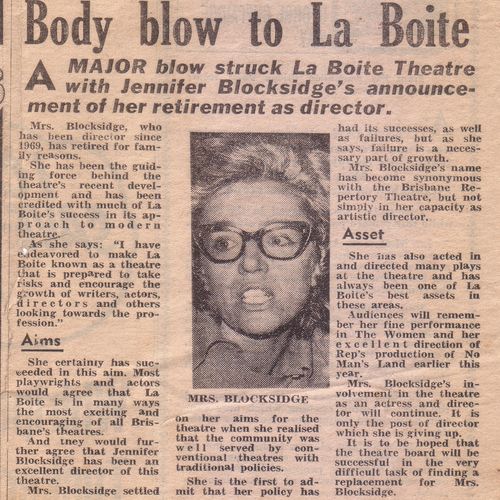

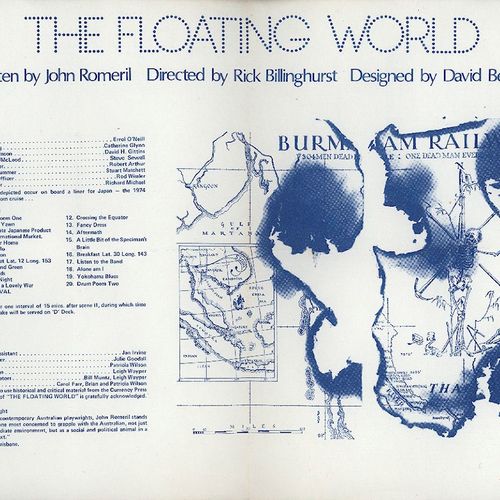
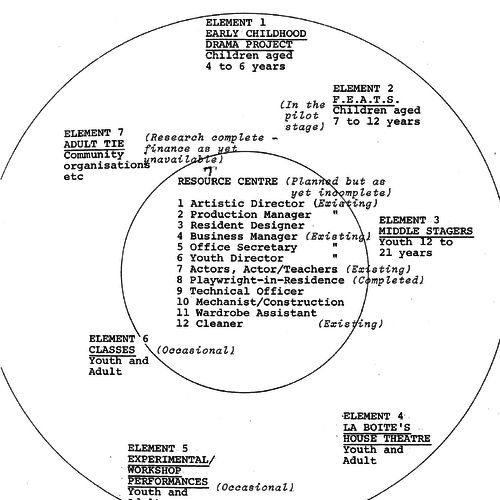
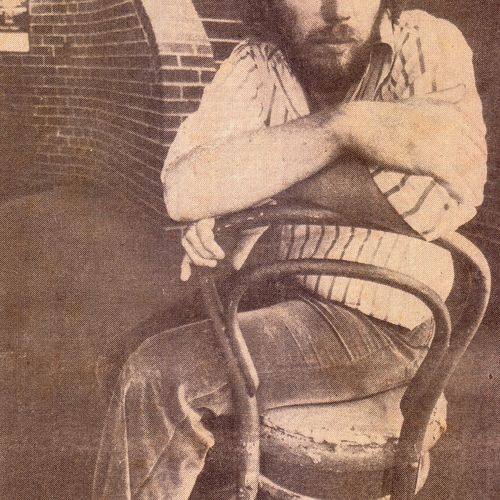
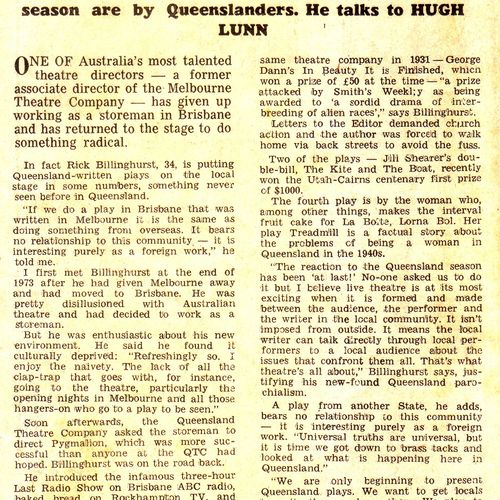


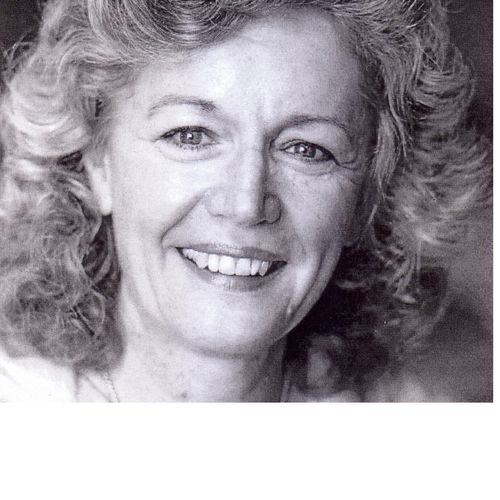
Tell us your story